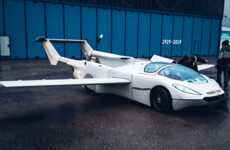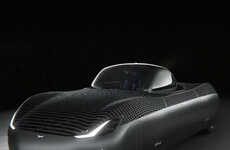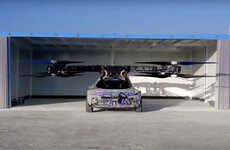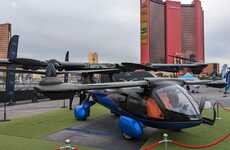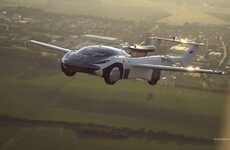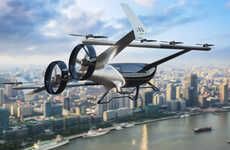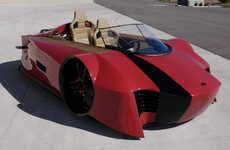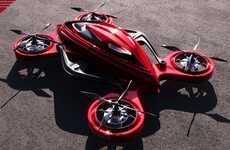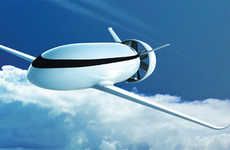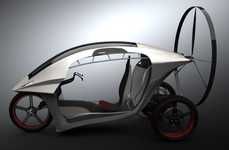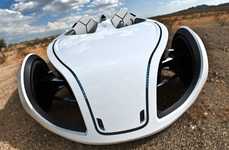
The PAL-V One Flying Car Converts into a Plane with the Touch of a Button
Sarah Moore — May 15, 2012 — Autos
References: pal-v & coolhunting
Traffic jams and blown out tires caused by horrendous road conditions will soon be a thing of the past for adopters of the PAL-V One flying car.
While there have been many hovering vehicles to hit both the big screen and the mass market, few have been able to seamless integrate a three-wheeled motorized pod with a gyroplane that can be converted between the two modes in a matter of minutes. With the touch of a button -- literally -- a single rotor and propeller emerge from the roof of the vehicle to allow the driver to take to the skies.
The hybrid vessel boasts effective air and land function, with the ability to soar under 4,000 feet for approximately 350 miles and cover 750 miles of ground when cruising along the road on a single tank of gas.
While there have been many hovering vehicles to hit both the big screen and the mass market, few have been able to seamless integrate a three-wheeled motorized pod with a gyroplane that can be converted between the two modes in a matter of minutes. With the touch of a button -- literally -- a single rotor and propeller emerge from the roof of the vehicle to allow the driver to take to the skies.
The hybrid vessel boasts effective air and land function, with the ability to soar under 4,000 feet for approximately 350 miles and cover 750 miles of ground when cruising along the road on a single tank of gas.
Trend Themes
1. Hybrid Vehicles - The integration of air and land capabilities in vehicles presents disruptive innovation opportunities for transportation and aviation industries.
2. Flying Cars - The development of flying cars that can seamlessly transition between driving and flying modes opens up possibilities for the automotive and aerospace industries to create innovative transportation solutions.
3. Roadless Vehicles - The concept of roadless vehicles, capable of navigating both on the ground and in the air, creates opportunities for advancements in transportation infrastructure and urban planning.
Industry Implications
1. Transportation - The integration of air and land capabilities in vehicles creates disruptive innovation opportunities for the transportation industry to redefine mobility options.
2. Aviation - The development of vehicles that can convert from road to air mode seamlessly opens up possibilities for the aviation industry to create new market segments and services.
3. Automotive - The emergence of flying cars presents disruptive innovation opportunities for automakers to create cutting-edge transportation solutions for both road and air travel.
2.5
Score
Popularity
Activity
Freshness


